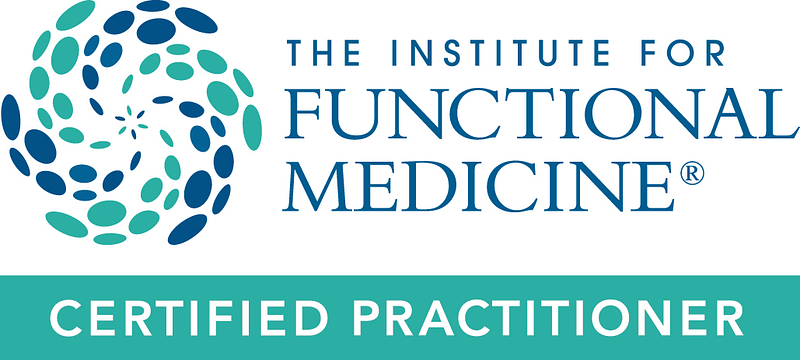An Age-Old Problem
In 1910, George M. Gould, M. D. of Ithaca, NY wrote the following:
“For several years it has been growing clearer to me that many patients do not get well because they live too exclusively on sugary and starchy foods. With greater activity and the resisting power of youth, children exhibit the morbid tendency by excessive nervousness, denutrition, ease-of-becoming ill, and by many ague and warning symptoms. I have asked the parents of such children to stop them in their use of all sweets, and most starches and almost immediately there was a most gratifying disappearance of the ‘nervousness,’ fickleness of appetite, colds, and vague manifold ailments.”
Dr. Gould went on to say, ” . . . the evil effects of sugar-drowning will sometimes be recognized as still more important and varied than I have said. Among others, I have had two cases in which it was clear that a too exclusive or an exaggerated diet of sugary foods was a cause of epilepsy. The first was that of a boy of nine years of age in which correction of eyestrain brought no relief of both petit and grand mal attacks. Then by diligent inquiry I learned that the boy (who was morbidly nervous…almost insanely active) ate no meats, eggs, vegetables, etc., and lived, practically, on cakes,’a little breakfast food, etc., with enormous quantities of sugar, syrups, etc. Recovery followed a diet list which excluded the sweets.”
Not-So-Common Common Sense
Without knowing it by name, Dr. Gould was likely describing diet-related cases of what is now called Attention Deficit Hyperactivity Disorder (ADHD). We have grown so accustomed to large amounts of sugar in our diets and culture that we can no longer see the problem that was obvious to Dr. Gould.
History Repeats Itself
Nearly 100 years later, the same dietary scenario is still being reenacted across America. The nutrient-deprived caloric excess of dietary sugar may be the most significant contributor to the peculiar type of malnutrition in our land-of-plenty that underlies poor health of Americans of all ages. Different from 1910, much of the sugar currently consumed is in the form of beverages–the omnipresent cans of soda, fruit drinks, and the trendy sugar- and caffeine-laced designer energy drinks.
A Dark History
White sugar has a dark history. Sugar cane is thought to be native to Southeast Asia. Alexander the Great imported it from India around 325 B.C., and it reached Egypt about 1000 years later. Christopher Columbus brought sugar cane to the Americas. The resulting sugar refining industry became the primary motivation for maintaining the African slave trade in the Caribbean, Mexico, Brazil, and the United States. Processing this “white gold” was hot, exhausting and dangerous, and it claimed many lives.
Liquid Candy
Japanese researchers perfected the extraction of high fructose corn syrup (HFCS) from corn in the 1970s. This “liquid candy” would prove to be 1.4 times sweeter than table sugar, easily soluble, versatile, and inexpensive.
In the United States, table sugar is usually derived from sugar cane or sugar beets and is comprised of sucrose, a 50/50 blend of glucose and fructose. HFCS can be up to 80 percent fructose. Corn is a significant allergen in human health, a fact that can contribute to HFCS’s adverse health effects for some.
HFCS has saturated the prepared food market and has become difficult for even astute consumers to avoid. Few people would eat 11 sugar cubes in one sitting, but they find it easy to drink its equivalent in a single can of soda many times a day. In 2000 alone, U.S. consumers drank 17 billion gallons of aggressively-marketed sodas containing HFCS.
No One Culprit
Because all sugars (sucrose, glucose, dextrose, lactose, maltose, dextrose, honey, maple syrup, agave, turbinado, Sucanat, etc.) have the same basic metabolic effects, each can detract from health if eaten in excess. Fructose is unique compared to most sugars in that it must first be metabolized by the liver. Animal studies link the use of fructose to fatty deposits in the liver, fibrotic scarring of the liver, and intestinal bloating. The packaging of sugar in foods with additives (e.g., caffeine, artificial colors and flavors, and preservatives) creates an additive effect that can uniquely undermine health.
Insulin
Insulin is a stress hormone that causes cellular growth and, as such, is linked to some cancers, obesity, and heart disease.
Glucose is the only sugar that can be burned as fuel inside cells, and it requires insulin to transport it across the cell membrane to be burned. Many of sugar’s adverse effects on health are related to elevated insulin levels that can result from a diet high in sugar.
The Real High Cost of Sugar
In addition to promoting harmful high insulin levels, excess sugar in the diet results in oxidative damage from Advanced Glycosolation End products (AGE) that interfere with collagen and elastin, structural components of (over) the skin and other vital organs. Excess intake of dietary sugar can cause or contribute to fatigue, gouty arthritis, cancer, tooth decay, clot formation, diabetes, rickets, osteoporosis, scurvy, obesity, degeneration of blood vessels and circulation, yeast overgrowth, immune dysregulation, behavior and mood disorders (ADD, ADHD, anti-social behavior, depression), increased risk of infection, elevated bad cholesterol (LDL) and triglycerides, gout, adrenal stress, pancreatic cancer in women, mineral imbalances and deficiencies (e.g., copper, magnesium, zinc, chromium, manganese, calcium, etc.), diseases of nutritional deficiencies, high blood pressure, kidney stones, cataracts, visual disorders, premature aging, and acidosis.
Sugar Feeds Cancer
Cancer cells have a big appetite for sugar to fuel their rapid growth. These rapidly growing cells have ten times more insulin receptors than non-cancerous cells, allowing them to readily utilize glucose for energy even in the absence of oxygen (anaerobic glycolysis), a metabolic situation that results in an unhealthy accumulation of lactic acid. Animal studies suggest that normal or, optimally, low-normal blood sugar levels result in improved cancer treatment outcomes and boost immune function.
Super-Sweet, Super-Sized
Not all of sugar’s potential to cause obesity is related to a simple excess of calories. After the body’s caloric (energy) needs are met and the liver’s stored energy reserves of sugar, glycogen, is untapped (as it usually is in sedentary people), sugars are converted to another stored form of energy called fat. When blood sugar levels rise, so do harmful insulin levels. Elevated insulin levels have historically protected the body during times of famine by forcing sugars into fat storage instead of being burned for the body’s energy needs, helping protect the body’s critical fat stores.
Is Sugar Addictive?
What we call a “sweet tooth” has its basis in brain chemistry. Endorphins are the feel-good chemicals responsible for the well-known “runner’s high.” In particular, alcoholics, women, and obese individuals may share similar disadvantageous brain chemistry that gives them a “sugar high” from eating sweets. Women tend to have more sugar cravings (often before menstruation or during menopause) than men.
People with lower than normal levels of serotonin, a neurotransmitter whose deficiency is seen in depression, insomnia, and migraines, may experience a euphoric rush when they eat sugary foods, different from the mildly pleasant feeling experienced by people who have normal serotonin levels. Measuring neurotransmitter levels in the urine can reveal imbalances of these powerful determinants of mood and behavior and also suggest actions to take to help restore balanced brain chemistry.
So SAD
Those who don’t “get” the impact of sugar in health need look no further than the examples of the sudden introduction of our highly-refined, nutrient-deprived Standard American Diet (SAD) into native cultures. The Pima Native Americans and Inuit peoples, for example, both suffered increases in degenerative diseases (gout, diabetes, high blood pressure, and obesity) upon adopting the SAD. Many Americans today are unknowingly participating in a similar dietary experiment that is undermining their health.
Supply/Demand
Sugar production in 2000 topped $3.5 billion, according to the Agriculture Department. Americans consume more sugar than any other nation and also spend more on healthcare than any other nation. Sugar manufacturers would have the public believe that sedentary lifestyles and overeating are necessary for consumers of sugar to succumb to poor health. While this rhetoric may contain seeds of truth, it takes focus away from what is likely the most effective strategy to improve health while reducing risk of chronic degenerative diseases through dietary manipulation: limiting the amount of sugar in the diet, the same pragmatic approach that Dr. Gould used successfully in 1910.
Benefits of Sugar
Is there a positive side to sugar? Yes. Adequate blood sugar is essential for life, particularly as an energy source for the brain and muscles, including the heart. Sugar has antiseptic properties and has been used topically to treat bedsores. Physicians once used sugar to enhance uterine contractions of women in labor. Sugar is a preservative and helps retain color in canned foods. It is in the form of black strap molasses (the dregs of the final extraction of cane sugar), however, where sugar has it greatest redeeming value. Black strap molasses is rich in minerals and vitamins, likely accounting for its reported health benefits.
A Blood Sugar Balancing Act
Blood sugar needs to be in balance. Low levels can result in coma and death, while high levels (as seen in poorly controlled diabetes), given enough time, have proved to be a reliable, if often silent, killer. The fact that blood sugar is essential for life should not be interpreted as a reason to eat or drink sugar. Quite the opposite. Eating refined sugar to maintain blood sugar (other than possibly a very small amount during an acute hypoglycemia episode) assures an unwanted ride on a blood sugar roller coaster. Relying on non-processed, fresh vegetables and, to a lesser extent, fruit (if not diabetic) as nutrient-dense sources of complex carbohydrates rather than the nutritionally-deficient calories from refined carbohydrates (sugars) is a far healthier choice. All refined sugars are separated from the vitamins and minerals found in the natural ancestral whole food from which they were derived. The resulting lack of nutrients requires that the body rob (deplete) its own nutrient stores to function.
Aaaw . . . Naturale?
HFCS made the news earlier this year when Cadbury Schweppes, manufacturer of 7-Up, used the phrase “All Natural” in its marketing. Some health advocates consider HFCS to be natural like, say, crack cocaine, another refined natural product. Many concerned citizens across America aren’t waiting for the courts to define “natural” and are taking steps to get HFCS-containing foods out of school lunch menus and vending machines.
A Return to Common Sense
Legal opinions aside, defending sugar as being even remotely healthy is becoming more and more difficult. If you feel confused when the sugar industry’s economic interests prevail over truth in the media, use the tool employed by Dr. Gould: common sense. Don’t wait for a whitewashed consensus from the government or from sugar refiners to define sugar’s health impact. Instead, take charge of your health by proactively limiting the amount of refined sugar in your diet.













